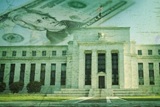Superweek in Central Banking And Gold

 Four of the world’s major central banks are announcing interest rate decisions this week. What does it imply for the gold market?
Four of the world’s major central banks are announcing interest rate decisions this week. What does it imply for the gold market?
Superweek in Central Banking
It is a busy time for central banks. Last week, the Reserve Bank of New Zealand cut its lending rates for the fifth time since June last year to a record low of 2.25 percent, while the ECB cut interest rates and further expanded its monetary stimulus. This week, four world’s major central banks (the Bank of Japan, the Fed, the Bank of England, and the Swiss National Bank) are deciding on their monetary policies. Therefore, it could be a volatile week for the gold market.
Will Bank of Japan Strike Again?
On Tuesday, we will get the Bank of Japan’s interest rate decision. Given the poor reaction to the NIRP introduced in January, it is unlikely that the BoJ will further cut interest rates. The BoJ’s governing council was divided about the NIRP and the move turned out to be very unpopular in Japan. On the other hand, Kuroda may feel some pressure to take action just to show that NIRP was not a mistake and to restore confidence in the BoJ. If rates are cut further, the price of gold should rally higher on increased volatility. On the contrary, if Kuroda calms the investors and returns to incremental expansions of asset purchases, the price of gold could decline on the reduced risk-aversion.
Will Fed Hike?
On Wednesday, Yellen will take the center stage. Few expect the Fed to lift rates. Actually, there is a zero probability of a rate hike, according to Fed Fund futures. Given that the Fed tries to communicate its future actions to the markets, the move is very unlikely. However, the FOMC members are expected to give some rate hike clues. Thus, what matters for the gold market is whether the Fed will send a dovish or hawkish signal. Given the current relative calm in the markets, the Fed could characterize the “balance of risks” in a more optimistic way than last time. Moreover, there is some evidence of rising prices (the ECB’s last actions may improve the Fed’s outlook for the global economy). Gold has been recently resilient to many factors, including the U.S. dollar, however, if the Fed restores the confidence in central banking, it may weaken.
Will Swiss National Bank and Bank of England Surprise Markets?
On Thursday, both the Swiss National Bank and the Bank of England are due to announce their interest rate decisions. The SNB is expected to remain its monetary policy unchanged. Theoretically, the ECB’s stimulus should strengthen the Swiss franc and add some pressure to cut rates further. However, the Swiss currency has actually weakened against the euro in the wake of the new ECB easing. The reason is that the franc has lost is safe-haven appeal since the SNB introduced negative interest rates. Thus, with the franc at about 1.10 there is no need for the SNB to act.
The Bank of England is also expected to remain the level of its interest rates unchanged. Although the Governor of the Bank of England, Mark Carney, said last month that it was more likely than not that rates would rise over the next two years, the threat of Britain leaving the European Union makes any surprising moves very unlikely.
Conclusions
Summing up, this week will be very busy for the world’s major central banks. Although they are not expected to change their respective interest rates, the central banks proved that they are able to surprise markets from time to time. The most important event for the gold market will be the Bank of Japan’s meeting (in the context of the introduction of NIRP at the last meeting) and the Fed’s announcement. Gold has recently been resilient to the central bank’s actions, therefore, it could continue the rally if we do not see any serious surprise. However, if the central bankers restore the confidence in the ability of the central banks to control the situation and stimulate the economy, the price of gold may go south.
Disclaimer: Please note that the aim of the above analysis is to discuss the likely long-term impact of the featured phenomenon on the price of gold and this analysis does not indicate (nor does it aim to do so) whether gold is likely to move higher or lower in the short- or medium-term. In order to determine the latter, many additional factors need to be considered (i.e. sentiment, chart patterns, cycles, indicators, ratios, self-similar patterns and more) and we are taking them into account (and discussing the short- and medium-term outlook) in our trading alerts.


















